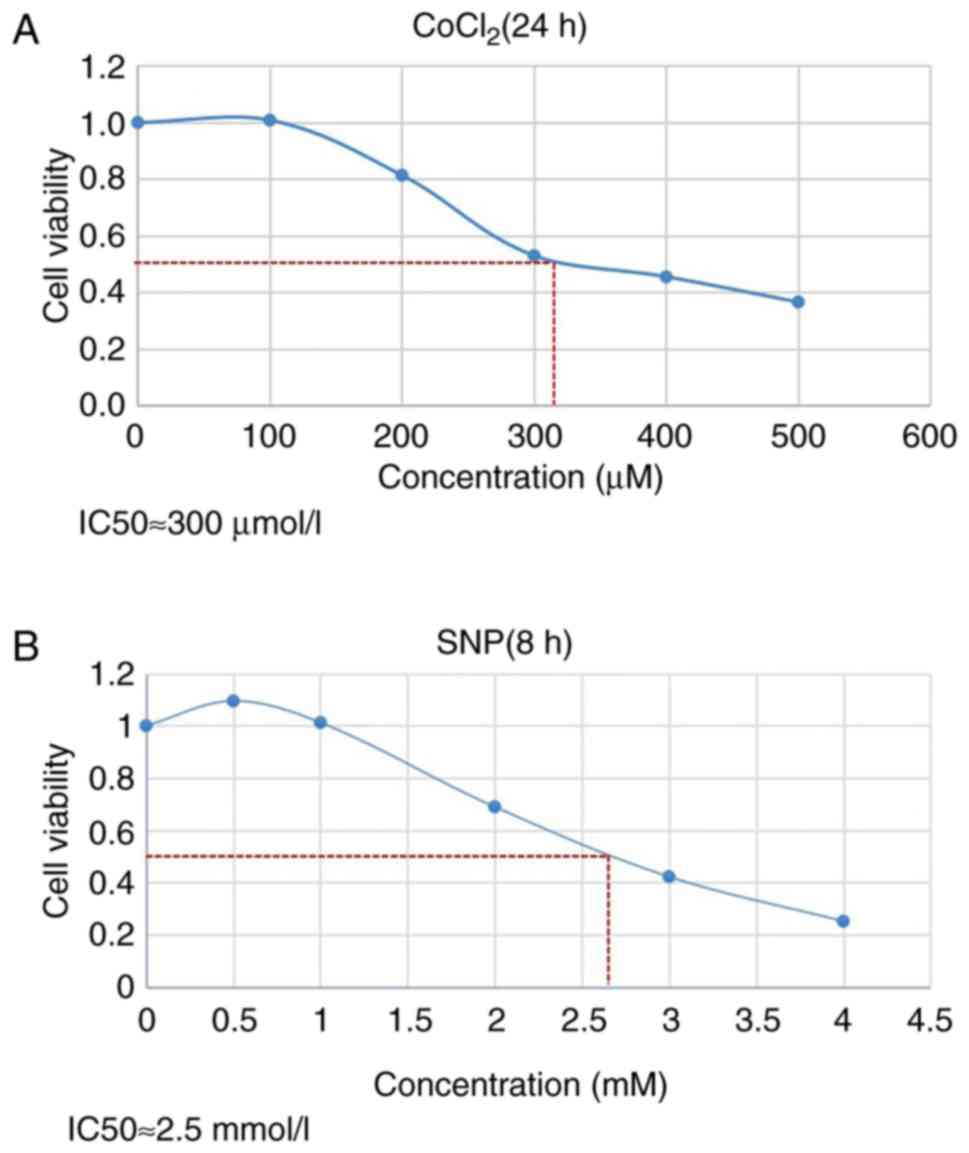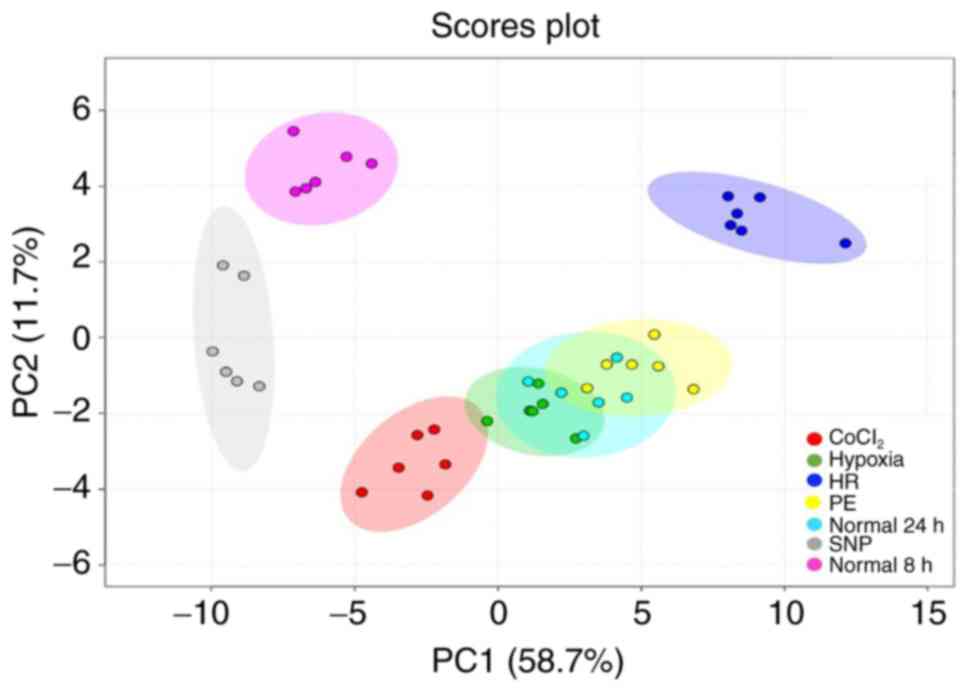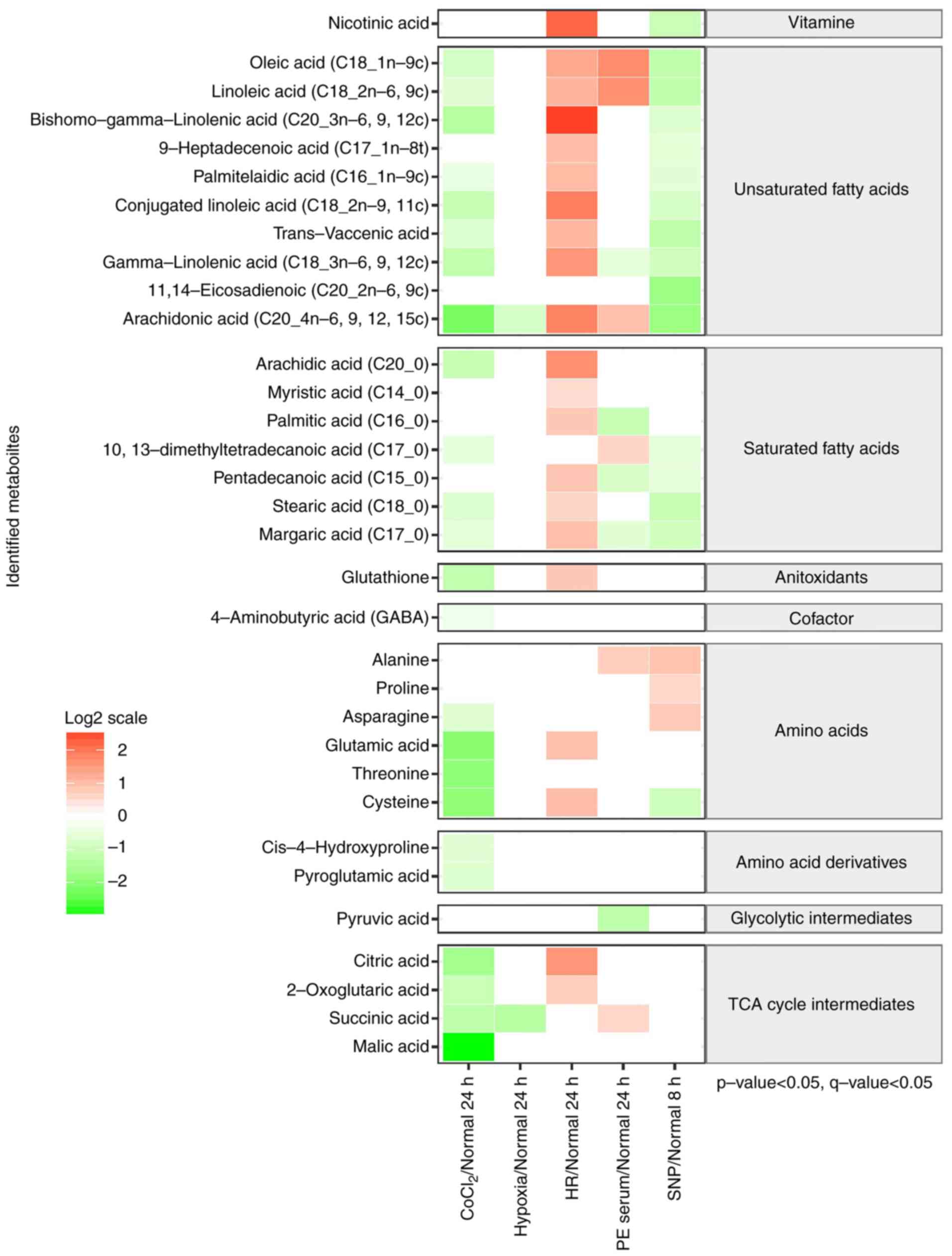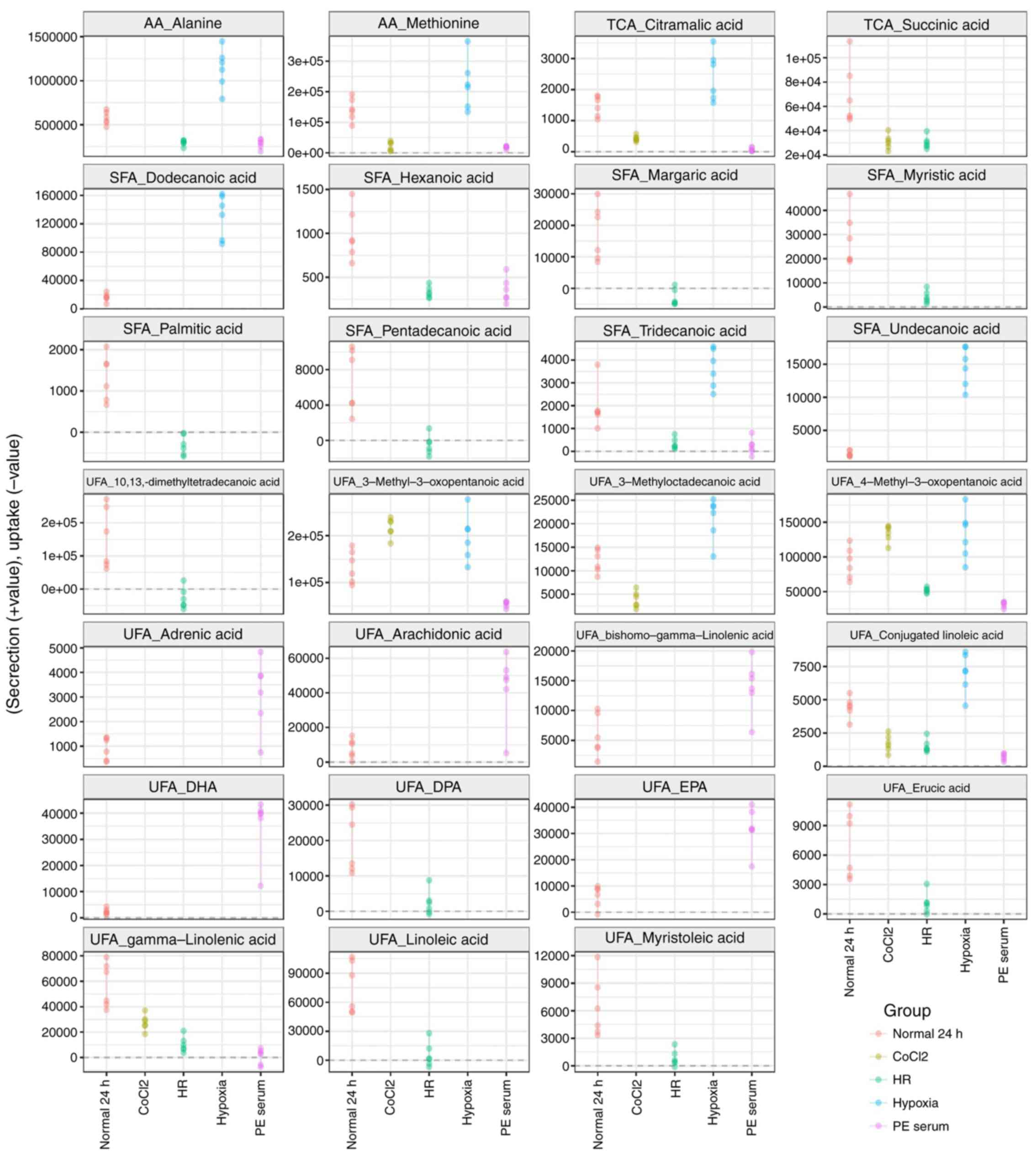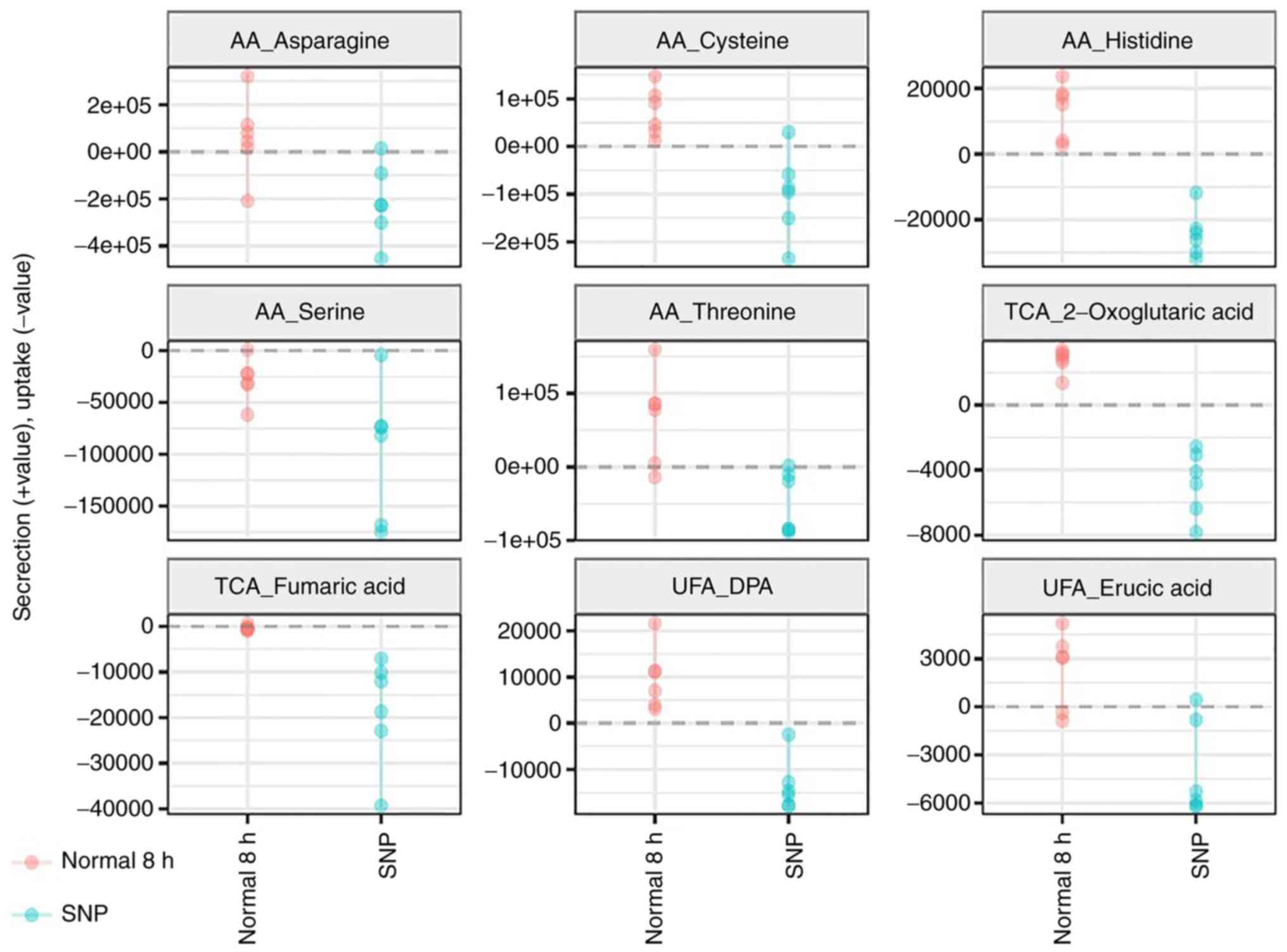|
1
|
Aouache R, Biquard L, Vaiman D and
Miralles F: Oxidative stress in preeclampsia and placental
diseases. Int J Mol Sci. 19(pii): E14962018. View Article : Google Scholar : PubMed/NCBI
|
|
2
|
Espinosa-Diez C, Miguel V, Mennerich D,
Kietzmann T, Sánchez-Pérez P, Cadenas S and Lamas S: Antioxidant
responses and cellular adjustments to oxidative stress. Redox Biol.
6:183–197. 2015. View Article : Google Scholar : PubMed/NCBI
|
|
3
|
Burton GJ, Woods AW, Jauniaux E and
Kingdom JC: Rheological and physiological consequences of
conversion of the maternal spiral arteries for uteroplacental blood
flow during human pregnancy. Placenta. 30:473–482. 2009. View Article : Google Scholar : PubMed/NCBI
|
|
4
|
Kalyanaraman B: Teaching the basics of
redox biology to medical and graduate students: Oxidants,
antioxidants and disease mechanisms. Redox Biol. 1:244–257. 2013.
View Article : Google Scholar : PubMed/NCBI
|
|
5
|
Mannaerts D, Faes E, Cos P, Briedé JJ,
Gyselaers W, Cornette J, Gorbanev Y, Bogaerts A, Spaanderman M, Van
Craenenbroeck E and Jacquemyn Y: Oxidative stress in healthy
pregnancy and preeclampsia is linked to chronic inflammation, iron
status and vascular function. PLoS One. 13:e02029192018. View Article : Google Scholar : PubMed/NCBI
|
|
6
|
Yang X, Guo L, Li H, Chen X and Tong X:
Analysis of the original causes of placental oxidative stress in
normal pregnancy and pre-eclampsia: A hypothesis. J Matern Fetal
Neonatal Med. 25:884–888. 2012. View Article : Google Scholar : PubMed/NCBI
|
|
7
|
Burton GJ and Jauniaux E: Placental
oxidative stress: From miscarriage to preeclampsia. J Soc Gynecol
Investig. 11:342–352. 2004. View Article : Google Scholar : PubMed/NCBI
|
|
8
|
Mert I, Oruc AS, Yuksel S, Cakar ES,
Buyukkagnici U, Karaer A and Danisman N: Role of oxidative stress
in preeclampsia and intrauterine growth restriction. J Obstet
Gynaecol Res. 38:658–664. 2012. View Article : Google Scholar : PubMed/NCBI
|
|
9
|
Wu F, Tian FJ, Lin Y and Xu WM: Oxidative
stress: Placenta function and dysfunction. Am J Reprod Immunol.
76:258–271. 2016. View Article : Google Scholar : PubMed/NCBI
|
|
10
|
De Paepe C, Krivega M, Cauffman G, Geens M
and Van de Velde H: Totipotency and lineage segregation in the
human embryo. Mol Hum Reprod. 20:599–618. 2014. View Article : Google Scholar : PubMed/NCBI
|
|
11
|
Alahari S, Post M and Caniggia I: Jumonji
domain containing protein 6: A novel oxygen sensor in the human
placenta. Endocrinology. 156:3012–3025. 2015. View Article : Google Scholar : PubMed/NCBI
|
|
12
|
Baker PN, Davidge ST, Barankiewicz J and
Roberts JM: Plasma of preeclamptic women stimulates and then
inhibits endothelial prostacyclin. Hypertension. 27:56–61. 1996.
View Article : Google Scholar : PubMed/NCBI
|
|
13
|
He G, Xu W, Chen Y, Liu X and Xi M:
Abnormal apoptosis of trophoblastic cells is related to the
up-regulation of CYP11A gene in placenta of preeclampsia patients.
PLoS One. 8:e596092013. View Article : Google Scholar : PubMed/NCBI
|
|
14
|
Luo X, Yao ZW, Qi HB, Liu DD, Chen GQ,
Huang S and Li QS: Gadd45a as an upstream signaling molecule of p38
MAPK triggers oxidative stress-induced sFlt-1 and sEng upregulation
in preeclampsia. Cell Tissue Res. 344:551–565. 2011. View Article : Google Scholar : PubMed/NCBI
|
|
15
|
Yuan Y, Hilliard G, Ferguson T and
Millhorn DE: Cobalt inhibits the interaction between
hypoxia-inducible factor-alpha and von Hippel-Lindau protein by
direct binding to hypoxia-inducible factor-alpha. J Biol Chem.
278:15911–15916. 2003. View Article : Google Scholar : PubMed/NCBI
|
|
16
|
Luo R, Wang Y, Xu P, Cao G, Zhao Y, Shao
X, Li YX, Chang C, Peng C and Wang YL: Hypoxia-inducible miR-210
contributes to preeclampsia via targeting thrombospondin type I
domain containing 7A. Sci Rep. 6:195882016. View Article : Google Scholar : PubMed/NCBI
|
|
17
|
Zou Y, Zuo Q, Huang S, Yu X, Jiang Z, Zou
S, Fan M and Sun L: Resveratrol inhibits trophoblast apoptosis
through oxidative stress in preeclampsia-model rats. Molecules.
19:20570–20579. 2014. View Article : Google Scholar : PubMed/NCBI
|
|
18
|
Saito S and Nakashima A: A review of the
mechanism for poor placentation in early-onset preeclampsia: The
role of autophagy in trophoblast invasion and vascular remodeling.
J Reprod Immunol. 101-102:80–88. 2014. View Article : Google Scholar : PubMed/NCBI
|
|
19
|
Covarrubias AE, Lecarpentier E, Lo A,
Salahuddin S, Gray KJ, Karumanchi SA and Zsengellér ZK: AP39, a
modulator of mitochondrial bioenergetics, reduces antiangiogenic
response and oxidative stress in hypoxia-exposed trophoblasts:
Relevance for preeclampsia pathogenesis. Am J Pathol. 189:104–114.
2019. View Article : Google Scholar : PubMed/NCBI
|
|
20
|
Yang Z, Bai B, Luo X, Xiao X, Liu X, Ding
Y, Zhang H, Gao L, Li J and Qi H: Downregulated Kruppel-like factor
8 is involved in decreased trophoblast invasion under
hypoxia-reoxygenation conditions. Reprod Sci. 21:72–81. 2014.
View Article : Google Scholar : PubMed/NCBI
|
|
21
|
Zhuang B, Luo X, Rao H, Li Q, Shan N, Liu
X and Qi H: Oxidative stress-induced C/EBPβ inhibits β-catenin
signaling molecule involving in the pathology of preeclampsia.
Placenta. 36:839–846. 2015. View Article : Google Scholar : PubMed/NCBI
|
|
22
|
Nangaku M and Eckardt KU: Hypoxia and the
HIF system in kidney disease. J Mol Med (Berl). 85:1325–1330. 2007.
View Article : Google Scholar : PubMed/NCBI
|
|
23
|
Myatt L and Cui X: Oxidative stress in the
placenta. Histochem Cell Biol. 122:369–382. 2004. View Article : Google Scholar : PubMed/NCBI
|
|
24
|
Silva JP, Proenca F and Coutinho OP:
Protective role of new nitrogen compounds on ROS/RNS-mediated
damage to PC12 cells. Free Radic Res. 42:57–69. 2008. View Article : Google Scholar : PubMed/NCBI
|
|
25
|
Williamson RD, McCarthy C, McCarthy FP and
Kenny LC: Oxidative stress in pre-eclampsia; Have we been looking
in the wrong place? Pregnancy Hypertension. 8:1–5. 2017. View Article : Google Scholar : PubMed/NCBI
|
|
26
|
Melland-Smith M, Ermini L, Chauvin S,
Craig-Barnes H, Tagliaferro A, Todros T, Post M and Caniggia I:
Disruption of sphingolipid metabolism augments ceramide-induced
autophagy in preeclampsia. Autophagy. 11:653–669. 2015. View Article : Google Scholar : PubMed/NCBI
|
|
27
|
Sugawara J, Suh DS, Faessen GH, Suen LF,
Shibata T, Kaper F, Giaccia AJ and Giudice LC: Regulation of
insulin-like growth factor-binding protein-1 by nitric oxide under
hypoxic conditions. J Clin Endocrinol Metab. 85:2714–2721. 2000.
View Article : Google Scholar : PubMed/NCBI
|
|
28
|
English FA, McCarthy FP, McSweeney CL,
Quon AL, Morton JS, Sawamura T, Davidge ST and Kenny LC: Inhibition
of lectin-like oxidized low-density lipoprotein-1 receptor protects
against plasma-mediated vascular dysfunction associated with
pre-eclampsia. Am J Hypertens. 26:279–286. 2013. View Article : Google Scholar : PubMed/NCBI
|
|
29
|
McCarthy C and Kenny LC: Therapeutically
targeting mitochondrial redox signalling alleviates endothelial
dysfunction in preeclampsia. Sci Rep. 6:326832016. View Article : Google Scholar : PubMed/NCBI
|
|
30
|
Sokolov DI, Ovchinnikova OM, Korenkov DA,
Viknyanschuk AN, Benken KA, Onokhin KV and Selkov SA: Influence of
peripheral blood microparticles of pregnant women with preeclampsia
on the phenotype of monocytes. Transl Res. 170:112–123. 2016.
View Article : Google Scholar : PubMed/NCBI
|
|
31
|
Xu Q, Du F, Zhang Y, Teng Y, Tao M, Chen
AF and Jiang R: Preeclampsia serum induces human glomerular
vascular endothelial cell hyperpermeability via the
HMGB1-Caveolin-1 pathway. J Reprod Immunol. 129:1–8. 2018.
View Article : Google Scholar : PubMed/NCBI
|
|
32
|
Roberts JM and Hubel CA: The two stage
model of preeclampsia: Variations on the theme. Placenta. 30 (Suppl
A):S32–S37. 2009. View Article : Google Scholar : PubMed/NCBI
|
|
33
|
Tamaru S, Kajihara T, Mizuno Y, Takano N,
Tochigi H, Sato T and Ishihara O: Heparin prevents oxidative
stress-induced apoptosis in human decidualized endometrial stromal
cells. Med Mol Morphol. Mar 16–2019.(Epub ahead of print). doi:
10.1007/s00795-019-00220-x. View Article : Google Scholar : PubMed/NCBI
|
|
34
|
Grosser N, Abate A, Oberle S, Vreman HJ,
Dennery PA, Becker JC, Pohle T, Seidman DS and Schröder H: Heme
oxygenase-1 induction may explain the antioxidant profile of
aspirin. Biochem Biophys Res Commun. 308:956–960. 2003. View Article : Google Scholar : PubMed/NCBI
|
|
35
|
Huang S, Mo TT, Norris T, Sun S, Zhang T,
Han TL, Rowan A, Xia YY, Zhang H, Qi HB and Baker PN: The CLIMB
(Complex Lipids In Mothers and Babies) study: Protocol for a
multicentre, three-group, parallel randomised controlled trial to
investigate the effect of supplementation of complex lipids in
pregnancy, on maternal ganglioside status and subsequent cognitive
outcomes in the offspring. BMJ Open. 7:e0166372017.PubMed/NCBI
|
|
36
|
Graham CH, Hawley TS, Hawley RG,
MacDougall JR, Kerbel RS, Khoo N and Lala PK: Establishment and
characterization of first trimester human trophoblast cells with
extended lifespan. Exp Cell Res. 206:204–211. 1993. View Article : Google Scholar : PubMed/NCBI
|
|
37
|
Smart KF, Aggio RBM, Van Houtte JR and
Villas-Bôas SG: Analytical platform for metabolome analysis of
microbial cells using methyl chloroformate derivatization followed
by gas chromatography-mass spectrometry. Nat Protoc. 5:1709–1729.
2010. View Article : Google Scholar : PubMed/NCBI
|
|
38
|
Smith CA, Want EJ, O'Maille G, Abagyan R
and Siuzdak G: XCMS: Processing mass spectrometry data for
metabolite profiling using nonlinear peak alignment, matching, and
identification. Anal Chem. 78:779–787. 2006. View Article : Google Scholar : PubMed/NCBI
|
|
39
|
Xia J, Sinelnikov IV, Han B and Wishart
DS: MetaboAnalyst 3.0-making metabolomics more meaningful. Nucleic
Acids Res. 43:W251–W257. 2015. View Article : Google Scholar : PubMed/NCBI
|
|
40
|
Wickham H: Ggplot2: Elegant graphics for
data analysis. Springer; New York: 2009
|
|
41
|
Ferguson BS, Rogatzki MJ, Goodwin ML, Kane
DA, Rightmire Z and Gladden LB: Lactate metabolism: Historical
context, prior misinterpretations, and current understanding. Eur J
Appl Physiol. 118:691–728. 2018. View Article : Google Scholar : PubMed/NCBI
|
|
42
|
Hess ML and Manson NH: Molecular oxygen:
Friend and foe. The role of the oxygen free radical system in the
calcium paradox, the oxygen paradox and ischemia/reperfusion
injury. J Mol Cell Cardiol. 16:969–985. 1984. View Article : Google Scholar : PubMed/NCBI
|
|
43
|
Liu J, Litt L, Segal MR, Kelly MJ, Pelton
JG and Kim M: Metabolomics of oxidative stress in recent studies of
endogenous and exogenously administered intermediate metabolites.
Int J Mol Sci. 12:6469–6501. 2011. View Article : Google Scholar : PubMed/NCBI
|
|
44
|
Hogg N and Kalyanaraman B: Nitric oxide
and lipid peroxidation. Biochim Biophys Acta. 1411:378–384. 1999.
View Article : Google Scholar : PubMed/NCBI
|
|
45
|
Guan D, Su Y, Li Y, Wu C, Meng Y, Peng X
and Cui Y: Tetramethylpyrazine inhibits CoCl2-induced neurotoxicity
through enhancement of Nrf2/GCLc/GSH and suppression of
HIF1a/NOX2/ROS pathways. J Neurochem. 134:551–565. 2015. View Article : Google Scholar : PubMed/NCBI
|
|
46
|
Chun HS and Low WC: Ursodeoxycholic acid
suppresses mitochondria-dependent programmed cell death induced by
sodium nitroprusside in SH-SY5Y cells. Toxicology. 292:105–112.
2012. View Article : Google Scholar : PubMed/NCBI
|
|
47
|
Dominiak A, Wilkaniec A, Wroczynski P,
Jęśko H and Adamczyk A: Protective effects of selol against sodium
nitroprusside-induced cell death and oxidative stress in PC12
Cells. Neurochem Res. 41:3215–3226. 2016. View Article : Google Scholar : PubMed/NCBI
|
|
48
|
Innes JK and Calder PC: Omega-6 fatty
acids and inflammation. Prostaglandins Leukot Essent Fatty Acids.
132:41–48. 2018. View Article : Google Scholar : PubMed/NCBI
|
|
49
|
Pollard JK and Mitchell MD: Intrauterine
infection and the effects of inflammatory mediators on
prostaglandin production by myometrial cells from pregnant women.
Am J Obstet Gynecol. 174:682–686. 1996. View Article : Google Scholar : PubMed/NCBI
|
|
50
|
Geleijnse JM, Giltay EJ, Grobbee DE,
Donders AR and Kok FJ: Blood pressure response to fish oil
supplementation: Metaregression analysis of randomized trials. J
Hypertens. 20:1493–1499. 2002. View Article : Google Scholar : PubMed/NCBI
|
|
51
|
Poniedzialek-Czajkowska E, Mierzynski R,
Kimber-Trojnar Z, Leszczynska-Gorzelak B and Oleszczuk J:
Polyunsaturated fatty acids in pregnancy and metabolic syndrome: A
review. Curr Pharm Biotechnol. 15:84–99. 2014. View Article : Google Scholar : PubMed/NCBI
|
|
52
|
Hallaq H, Smith TW and Leaf A: Modulation
of dihydropyridine-sensitive calcium channels in heart cells by
fish oil fatty acids. Proc Natl Acad Sci USA. 89:1760–1764. 1992.
View Article : Google Scholar : PubMed/NCBI
|
|
53
|
Bilodeau JF: Review: Maternal and
placental antioxidant response to preeclampsia-impact on vasoactive
eicosanoids. Placenta. 35 (Suppl):S32–S38. 2014. View Article : Google Scholar : PubMed/NCBI
|
|
54
|
Zhang Z, Li P, Wang Y and Yan H:
Hypoxiainduced expression of CXCR4 favors trophoblast cell
migration and invasion via the activation of HIF1a. Int J Mol Med.
42:1508–1516. 2018.PubMed/NCBI
|
|
55
|
Xu C, Li X, Guo P and Wang J:
Hypoxia-Induced Activation of JAK/STAT3 signaling pathway promotes
trophoblast cell viability and angiogenesis in preeclampsia. Med
Sci Monit. 23:4909–4917. 2017. View Article : Google Scholar : PubMed/NCBI
|
|
56
|
Basak S, Das MK and Duttaroy AK: Fatty
acid-induced angiogenesis in first trimester placental trophoblast
cells: Possible roles of cellular fatty acid-binding proteins. Life
Sci. 93:755–762. 2013. View Article : Google Scholar : PubMed/NCBI
|
|
57
|
Dipasquale D, Basiricò L, Morera P, Primi
R, Tröscher A and Bernabucci U: Anti-inflammatory effects of
conjugated linoleic acid isomers and essential fatty acids in
bovine mammary epithelial cells. Animal. 12:2108–2114. 2018.
View Article : Google Scholar : PubMed/NCBI
|
|
58
|
Li K, Sinclair AJ, Zhao F and Li D:
Uncommon fatty acids and cardiometabolic health. Nutrients.
10:15592018. View Article : Google Scholar :
|















